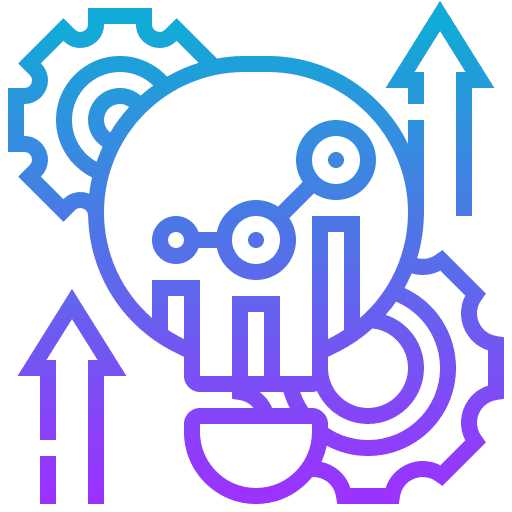What is MLOps from R&D (Research & Development) and business perspectives?
Introduction to MLOps
MLOps stands for Machine Learning Operations. It’s a way to make the process of developing machine learning projects more organized. Just like any big project, building a machine learning model involves many steps — from creating the model to making sure it works well in real-world situations. MLOps helps in managing these steps smoothly and connects the project to a company’s main goals and its existing technology systems. This is important because it helps businesses use machine learning effectively, ensuring that the time and money spent on developing these models lead to real benefits.
Evolution of MLOps
The idea of MLOps didn’t just appear out of nowhere; it grew from earlier practices known as DevOps and DataOps. Let’s break it down a bit:
DevOps: This practice came about to improve how software is developed and maintained. It focuses on making sure that the development of software (by developers) and its operation (by IT professionals) are not isolated but work together smoothly. This helps in making software faster and more reliable.
DataOps: As companies began to handle large amounts of data, DataOps emerged. It focuses on managing data effectively, making sure that it is accurate and available for use in decision-making without delays.
MLOps in Research & Development (R&D)
The Role of MLOps in R&D
In the world of research and development, MLOps play a crucial role by making the development of AI and machine learning projects more systematic. This means it helps organize how these projects are carried out, from start to finish. By using MLOps, teams can work more effectively, making fewer mistakes and getting better results. It’s all about making sure that the work being done in labs and on computers turns into something useful and practical.
Integration with DevOps and DataOps
MLOps fits right into the space where DevOps and DataOps work. It brings together the best of both worlds:
DevOps focuses on making software development and operations work together smoothly. It helps in releasing software faster and with fewer problems.
DataOps deals with managing data efficiently, ensuring that it is ready and reliable for use when needed.
MLOps builds on these by adding specific practices needed for AI and machine learning, like managing large amounts of data and making sure models are accurate and can be used effectively in real-world applications.

Key Components of MLOps in R&D
Data Management: This involves organizing and keeping track of all the data that you need for your projects. MLOps helps ensure that data is not only stored properly but also easy to access and use.
Experimentation and Model Development: MLOps provides tools and methods to help teams experiment with new ideas systematically. This means trying out different approaches in an organized way to see what works best.
Model Versioning and Lineage: Just like keeping versions of software, MLOps keeps track of different versions of models. This helps in understanding changes over time and making sure you can always go back to a previous version if needed.
Challenges in R&D
R&D teams face several challenges that MLOps helps address:
Complexity of Projects: AI and machine learning projects can get very complex. MLOps helps manage this complexity by providing clear processes and tools.
Repeatability: It’s often hard to get the same results consistently in R&D. MLOps helps by making sure experiments can be repeated and results can be reproduced.
Time to Results: These projects can take a long time to show results. MLOps speeds up the process by improving how teams work and how experiments are run.
By addressing these challenges, MLOps ensures that the innovative work done in R&D can move smoothly into real-world applications, making the whole process more efficient and successful.
MLOps in Business
Translating R&D to Business Applications
MLOps is like a bridge that helps turn the ideas and experiments from research and development into real products and services that businesses can use. It makes sure that the models created by data scientists are not just good in theory but also work well in real situations. This is crucial for businesses that want to use AI to improve their products or services.
Scaling AI Across the Organization
MLOps helps businesses grow their use of AI from just a few small projects to something that is used across the whole organization. It provides a plan and tools that make it easier to use AI in many parts of the business, not just in one or two areas. This means more parts of the business can benefit from AI, whether it’s to understand customers better, speed up processes, or create new things.

MLOps for Continuous Improvement and Deployment
Automated Model Training and Deployment: Automation is a big part of MLOps. It helps by taking care of routine tasks in training and deploying AI models. This means once the initial setup is done, the system can handle much of the work on its own, letting people focus on more important things.
Monitoring and Maintenance: AI models can get outdated as things change. MLOps includes tools to keep an eye on models and update them when needed. This helps make sure that the models are always doing their job well and are up to date with the latest data.

Business Benefits of MLOps
Enhanced Collaboration: MLOps helps data scientists and operations teams work better together. By having clear processes and shared tools, everyone knows what to do and can work more effectively as a team.
Faster Time-to-Market: With MLOps, businesses can move faster from an idea to a finished product. This is because MLOps streamlines how models are developed and put into use, reducing delays and problems.
Increased ROI on AI Investments: By making sure more AI projects are successful and reach the final production stage, MLOps helps businesses get more value from their investments in AI. This means the money and effort put into developing AI models bring real and positive results.
Best Practices in Implementing MLOps
Strategies for Successful MLOps
Implementing MLOps successfully starts with a clear plan and a focus on the end goals. Here are some strategies to consider:
Start Small: Begin with a small, manageable project before expanding. This allows you to see what works and what doesn’t without too much risk.
Focus on Communication: Ensure that everyone involved understands the goals and processes. Good communication helps prevent misunderstandings and keeps projects on track.
Create Clear Guidelines: Develop clear rules for how to handle data, build models, and deploy them. This helps everyone know what to do and follow the best practices.
Regular Training: Keep your team updated with the latest in AI and MLOps. Training helps them use tools effectively and stay ahead in their field.
Choosing the Right Tools and Technologies
Selecting the right tools is crucial for effective MLOps. Here’s how to approach this:
Assess Your Needs: Look at what you need the tools to do before you choose them. Different tools are good for different tasks.
Ease of Use: Choose tools that are easy to use and fit well with your team’s skills. Complicated tools can slow down your projects.
Support and Community: Prefer tools that have good support from the makers and a strong user community. This can help solve problems faster.
Integration: Make sure the tools work well with your existing systems. Tools that integrate easily can save a lot of time and effort.
Building an MLOps Culture
Creating a culture that supports MLOps is as important as any tool or strategy. Here’s how to build such a culture:
Leadership Support: Make sure leaders in your organization understand and support MLOps. Their support can motivate others to take it seriously.
Collaboration: Encourage teams to work together and share their knowledge about MLOps. Collaboration can lead to better ideas and solutions.
Reward Innovation: Recognize and reward efforts to improve or innovate with MLOps. This encourages people to keep looking for better ways to do things.
Continuous Learning: Promote ongoing learning and experimentation. A culture that values learning is more likely to adapt and improve.
Conclusion
As we look toward the future, MLOps is expected to become even more integral to how companies leverage AI and machine learning, evolving with advancements in technology to enhance efficiency and outcomes. Understanding MLOps is crucial for both R&D and business sectors, enabling the former to effectively transform innovative ideas into practical solutions, and the latter to apply these solutions to enhance products and operations.
The successful implementation of MLOps not only streamlines project processes but also significantly increases the value brought to businesses. For organizations aiming to improve their MLOps capabilities, visiting Cortech offers access to expert MLOps services, ensuring they are well-equipped to meet the demands of future technological advancements and market needs.
Frequently Asked Questions
What is MLOps?
MLOps, or Machine Learning Operations, is a set of practices that aims to streamline the development, deployment, and maintenance of machine learning models. It integrates the principles of DevOps (software development and IT operations) with machine learning, ensuring that these models are not only well-designed but also effectively integrated into business applications.
Why is MLOps important for R&D?
In research and development, MLOps plays a crucial role in managing the complexity of machine learning projects. It provides systematic approaches for managing data, conducting experiments, and developing models which helps in achieving more reliable and reproducible results. This structured approach accelerates the development of new technologies and ensures that innovations can transition smoothly from the lab to real-world applications.
How does MLOps benefit business operations?
MLOps facilitates the scaling of machine learning across an organization, ensuring that AI technologies are not just confined to isolated projects but are integrated across various functions. This leads to enhanced operational efficiency, better decision-making capabilities, and the creation of new business opportunities through advanced analytics and automated processes.
What are the first steps an organization should take to implement MLOps?
To start with MLOps, an organization should first define clear objectives for its machine learning projects and understand how these align with its broader business goals. Next, it’s essential to evaluate and choose the right tools and technologies that fit the organization’s needs. Finally, fostering a culture that embraces continuous learning, collaboration, and innovation is crucial for successful MLOps implementation.













